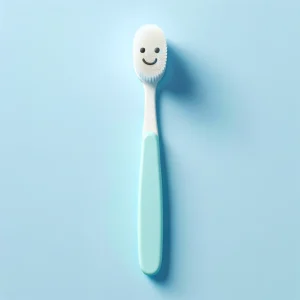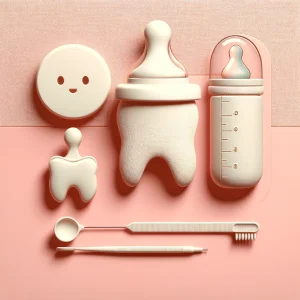Early childhood caries (ECC) is defined as cavities that appear in the primary teeth of children 71 months of age and younger. Commonly known as “baby bottle tooth decay,” this health problem occurs especially due to night feeding habits.
What Causes Baby Bottle Tooth Decay?
What are the symptoms of baby bottle tooth decay?
ECC first begins as white, opaque spots on the teeth near the gums and progresses to yellow-brown spots. These symptoms usually indicate that the decay is advanced.

How to Take Precautions Against Baby Bottle Tooth Decay?
The first step in preventing ECC is to take the child to a pediatric dentist within 6 months after the first tooth appears. Cleaning the teeth after feeding and organizing night feeding are also important measures.
Is There a Treatment for Baby Bottle Tooth Decay?
Treatment methods vary depending on the stage of the decay, including preventive treatments, aesthetic fillings, and root canal treatment if necessary. This falls within the field of pediatric dentistry. Early intervention with pediatric dentistry is critical to preventing further health problems.
Baby bottle tooth decay is a preventable health problem with early intervention and the right precautions. Parents taking conscious steps towards their children’s dental health can make a big difference in overcoming this problem.
What are the Symptoms of Tooth Decay in Babies and Children?
Tooth decay in babies can be understood with a few simple methods. With a pair of careful eyes and timely intervention, tooth decay can be saved.
Color Changes in Teeth
One of the first signs of tooth decay in babies and children is the formation of white or brown spots on the surface of the teeth. These spots indicate the beginning of decay.
Pain and Sensitivity in Teeth
Babies and children with tooth decay may experience pain or discomfort while feeding. Cold, hot or sweet foods can cause sensitivity in the teeth.
Gum Problems
Decay can cause inflammation of the gums. Redness, swelling and bleeding in the gums can indicate the presence of decay.
Preventive Treatment Methods and Precautions That Can Be Applied at Home
You can prevent tooth decay in babies and children with a few simple practices. The most important thing here is to create a routine. If children acquire the habits listed below and have regular dentist check-ups, they will not have a problem with decay.
Fluoride Applications
Fluoride applications by baby and pediatric dentists can help prevent tooth decay. At home, it is recommended to use toothpaste containing fluoride.
Regular Teeth Brushing
Babies and children should brush their teeth twice a day. Developing the habit of brushing teeth at an early age is important for maintaining dental health.
Healthy Eating Habits
Limited consumption of sugary and acidic foods is critical to preventing tooth decay. Healthy snacks should be offered to infants and children.
Dental Health Tips for Parents
A child's perspective on the world is their parents. Therefore, parents have a great responsibility to protect their children's dental health.
Visiting the Dentist at an Early Age
When babies' first teeth appear or before they turn 1 year old at the latest, çocuk diş hekimine götürülmesi önemlidir.
Pay Attention to Night Feeding
Feeding babies milk or juice during the night can trigger tooth decay. Night feedings should be replaced with water.
Playful Brushing Activities
Making the habit of brushing your teeth fun helps children adopt this habit. For example, using colorful and characterful toothbrushes or brushing while listening to tooth brushing songs are effective methods.
These tips and precautions can be effective in protecting the dental health of babies and children and preventing tooth decay. It is possible to prevent tooth decay with early intervention and correct care methods.




 by
by